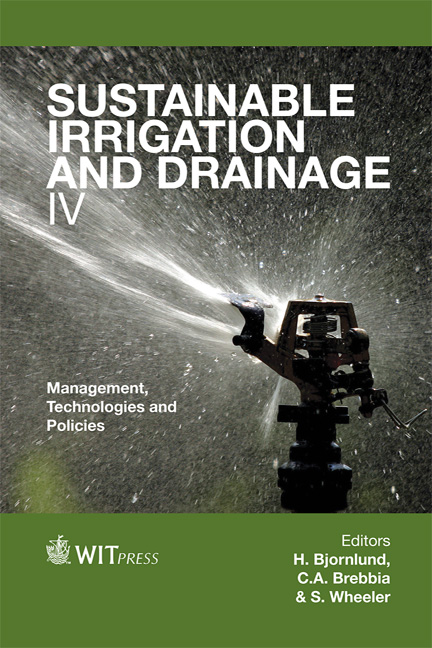Response Of Leaf, Non-leaf Yield Characters And Plant Fraction Interrelationship Of Indigenous Wild Cucumber Cucumis Myriocarpus To Varying Irrigation Intervals And NPK Fertilizer Rates
Price
Free (open access)
Transaction
Volume
168
Pages
10
Page Range
359 - 368
Published
2012
Size
374 kb
Paper DOI
10.2495/SI120311
Copyright
WIT Press
Author(s)
R. J. Nkgapele, M. S. Mphosi & K. G. Shadung
Abstract
Wild-cucumber, Cucumis myriocarpus, is among the most important indigenous crop plants in rural Limpopo Province of South Africa, primarily used as an ethno-botanical crop and a leafy green vegetable. An experiment laid out in a split-plot design and replicated three times was conducted to study the effects of irrigation frequency (2, 4 and 6 day interval) and NPK fertilizer rate (0 Kg NPK ha-1, 60-40-20 kg NPK ha-1, 120-80-40 kg NPK ha-1 and 180-120-60 kg NPK ha-1) on leaf and non-leaf yield characters and plant fraction interrelationships of Cucumis myriocarpus. The intermediate treatment of four day irrigation interval and 120-80-40 kg NPK ha-1application rate produced significantly higher (P < 0.05) leaf and non-leaf yield characters than the extreme treatments of short two day irrigation intervals and low 60-40-20 kg NPK ha-1; and long six day irrigation intervals and 180-120-60 kg NPK ha-1. Only fresh plant fraction interrelationships were significant. In conclusion, the results of the study indicate that Cucumis myriocarpus can be successfully grown using conventional production methods and supply rural households with good yields of a leafy green vegetable as well as providing raw materials needed for ethnobotanical purposes. Keywords: yield characters, wild cucumber, ethno-medicine, leaf area.
Keywords
yield characters, wild cucumber, ethno-medicine, leaf area.





